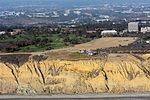Scripps Research

Scripps Research, previously known as The Scripps Research Institute (TSRI), is a nonprofit American medical research facility that focuses on research and education in the biomedical sciences. Headquartered in San Diego, California, the institute has over 170 laboratories employing 2,100 scientists, technicians, graduate students, and administrative and other staff, making it the largest private, non-profit biomedical research organization in the United States and among the largest in the world.The institute holds over 1,100 patents, has produced 11 FDA-approved therapeutics, and has generated over 50 spin-off companies. According to the 2017 Nature Innovation Index, Scripps Research is the #1 most influential research institution in the world. The Scripps Research graduate program is ranked 9th nationally in the biological sciences, 6th for organic chemistry, and 6th for biochemistry.In 2022, their Jupiter, FL campus became a part of the University of Florida. Jupiter-based graduate students remain part of the Scripps Research graduate program.
Excerpt from the Wikipedia article Scripps Research (License: CC BY-SA 3.0, Authors, Images).Scripps Research
North Torrey Pines Court, San Diego Torrey Pines
Geographical coordinates (GPS) Address Website Nearby Places Show on map
Geographical coordinates (GPS)
| Latitude | Longitude |
|---|---|
| N 32.8929 ° | E -117.2427 ° |
Address
Administration
North Torrey Pines Court 3301
92037 San Diego, Torrey Pines
California, United States
Open on Google Maps







